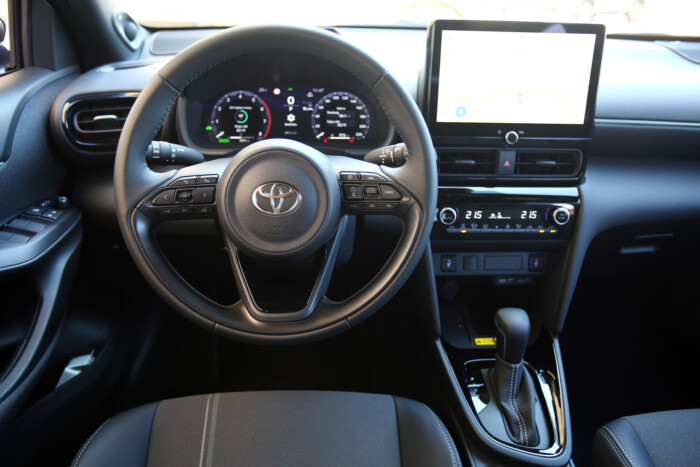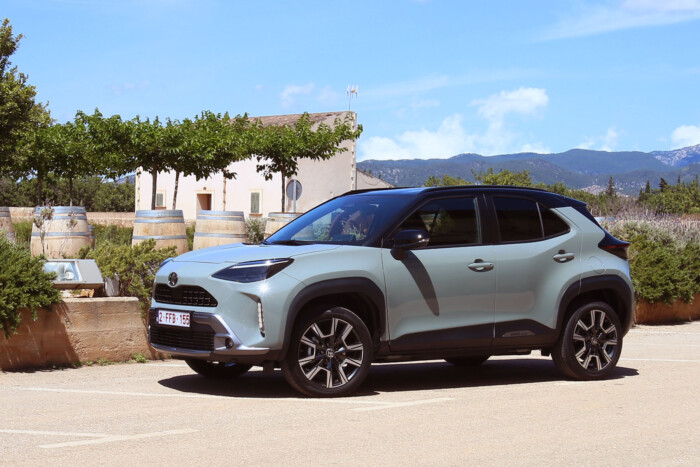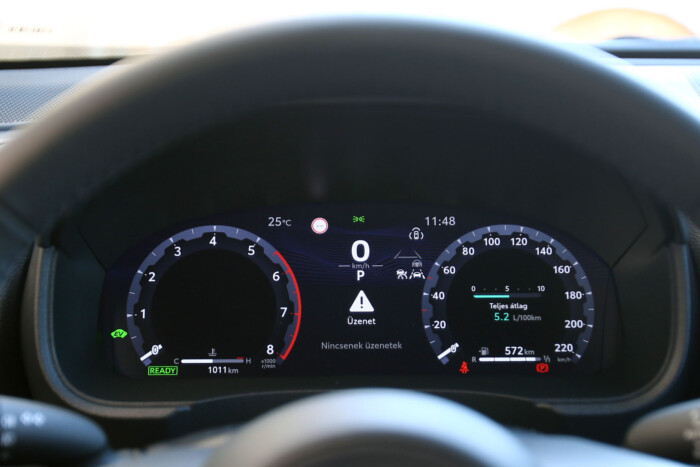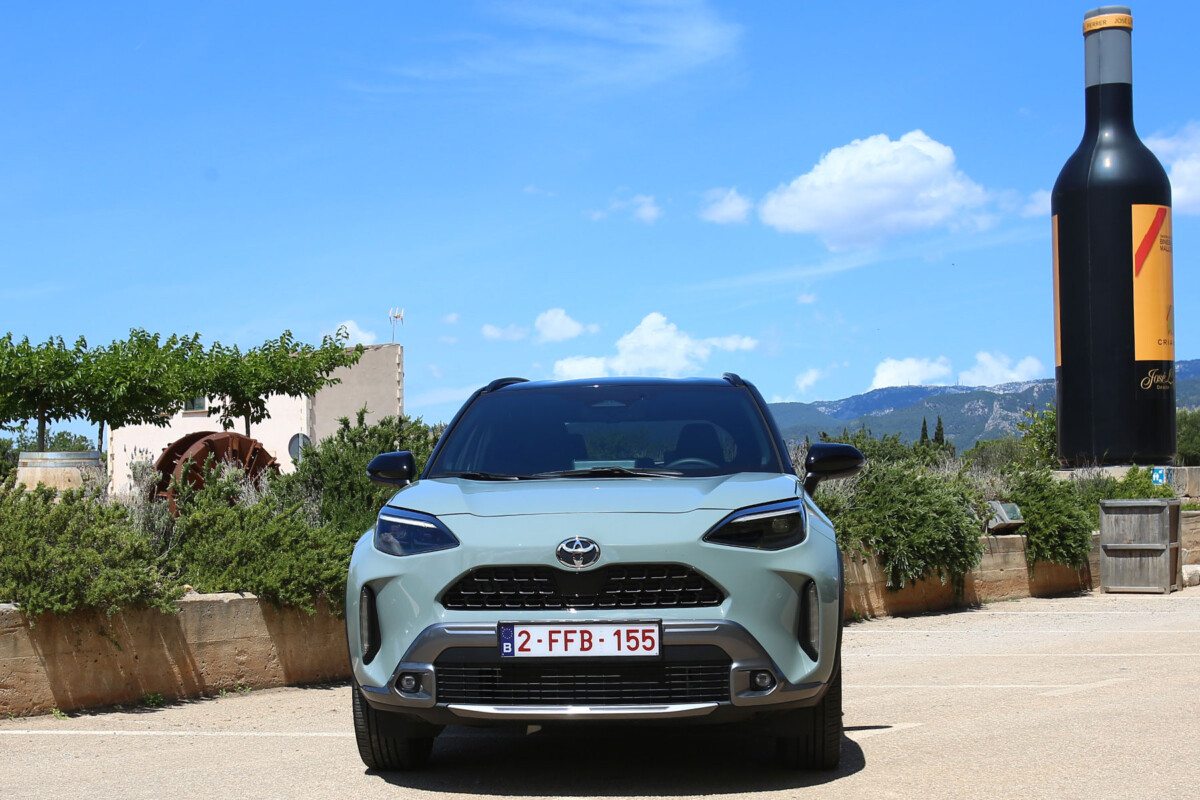We drove with 215/50 R18 tires, a combination of the largest rim diameter and smallest sidewall height between the 215/55 R17 and 205/65 R16 tire sizes. With this wheel, the Yaris Cross offered average suspension comfort, was not bothered by vibration, but also did not surprise me with the smooth operation of a compact car with a well-tuned chassis.
Interestingly, despite feedback from customers, the trade press and the efforts of the European Development Center in Belgium, noise comfort remains poor. This surprised the other colleagues as well. Although they are also professionals, none of us get into a small crossover and have to drive in ethereal silence.
The manufacturer has improved sound insulation, but the Yaris Cross is still loud. Acceleration to 100 with 116 hp takes 11.2 seconds and 10.7 seconds with 130 hp. 4×4 models are 6-6 tenths more
When driving on the highway, the engine becomes unpleasantly loud when the accelerator is pressed high. When you reach 120-130, the engine sound is tamed, and at constant speed the noise from the drive chain is quite acceptable, but the wind noise from the mirrors and front roof pillar is still annoying.
We've driven smooth, front-wheel-drive cars on dry asphalt, so I can't share anything with you about Snow or Trail mode on 4WD models.
Tuned to be more agile in its chassis and steering, the GR Sport was noticeably tighter and took road bumps more dryly. On the other hand, the Sport model didn't offer such a rocket advantage in terms of handling, which wouldn't have made the smooth chassis any more agreeable for me. Here, acceptable suspension comfort and noticeable road holding, with healthy cornering speed, are provided at the same time as a perfectly well-tuned car. Between the two points, the steering wheel rotates by 2.65.

You don't have to settle for the GR Sport's tighter chassis tuning, the 2024 Yaris Cross is a nimble and agile car even with the basic chassis. But the GR Sport's interior is much nicer than that with red decorative stitching
In a direct comparison, the 130-horsepower model may have better acceleration compared to the 116-horsepower model, but we did not have the opportunity to conduct such a test. Therefore, the stronger drive system alone is sufficient for the car, but the half-second advantage in acceleration from 0 to 100, with first gear, is 10.8 seconds instead of 11.2, and the top speed of 170 km/h is not enough. Appealing to fans of indoor arcade banging.
The car is economical not only on paper. On our very small urban test route, mostly highways and highways, the hybrid crossover managed 100 kilometers with 5.2 liters, according to the on-board computer, despite gas acceleration.
In the city where the hybrid drive system is in its element and we can easily slide by braking and taking off the gas by recovering part of the kinetic energy lost in imperfect hybrid cars but here it is converted into electric energy, it is also possible to consume 4 liters if we practice a little with separate acceleration and let go. The accelerator pedal for the characteristics of the hybrid drive system and we used its capabilities.

There is not a huge difference in power in favor of the new hybrid car, but it works perfectly. Refined and economical, just like the 116 hp engine
The harmony and sophistication between the two petrol engines and two electric motors working together at the front of the front-wheel drive Toyota Yaris Cross remains unparalleled. The ins and outs of individual drive components are very oily, well paced, like the harmony between members of a band or brigade that has been grinding together for decades.
It's a good thing, I hear from people who are no doubt car enthusiasts that they are disgusted by driving a hybrid with gas rising. But noise reduction has become less of an issue with improved noise insulation, and as a mechanical masterpiece, Toyota's full hybrids have atmosphere and character.
As someone who loves cars, it has something to love, giving you room to play as a mechanic with B mode for smooth and increased regeneration, use of electrical reserves when rolling or shifting separately (but generally increased consumption due to bypassing the drive system) EV mode, which is useful you can leave Home quietly or just arriving.

According to the computer, the average consumption did not exceed 5.2 liters/100 km, mostly on the highway and on the test road, which is not appropriate for a hybrid car.
You can cover many urban kilometers on electricity without being shot down by overcrowded, inoperable or simply unproven electric chargers, and you can go far without wasting time or losing range. Electric cars with large batteries are an environmentally destructive answer to occasional long trips, if a car with a 70-80-100 kWh battery is primarily only used to cover distances of 30-100 kilometers per day, in most cases between two charges. Options for which it would be enough to harm the environment by producing a much smaller battery for the Earth.












































